Facebook Ads is a valuable tool for building a strong brand identity. With its impressive reach and precise targeting options, it’s well-equipped to get the job done. If you have a clear vision and a resonating message, then all you need is to add a good action plan.
In this article, I take you through 6 steps you can take to boost brand awareness for your product or service. In particular, you will learn how to conduct a brand lift campaign and a brand awareness campaign. I also explain how to measure success, where to get data, and what metrics to track.
1. Assess the initial brand awareness to set a benchmark
Before you start a brand awareness campaign, it’s useful to measure where you stand. Then, you will be able to see whether your marketing activities are working and whether there is an actual increase.
There are many ways to estimate brand awareness. For example, you can:
- conduct surveys
- use social listening tools
- track brand sentiment
- conduct competitor research
- monitor your brand’s web presence
- track media coverage
…and more.
But I recommend these two main methods that give the most precisely measurable and meaningful results.
Branded Search Volume
The first is to check the monthly search volume for your brand in Google’s Keyword Planner. Such metrics as Average Monthly Searches and Three-Month Change give you a useful snapshot of the status quo and help measure changes.
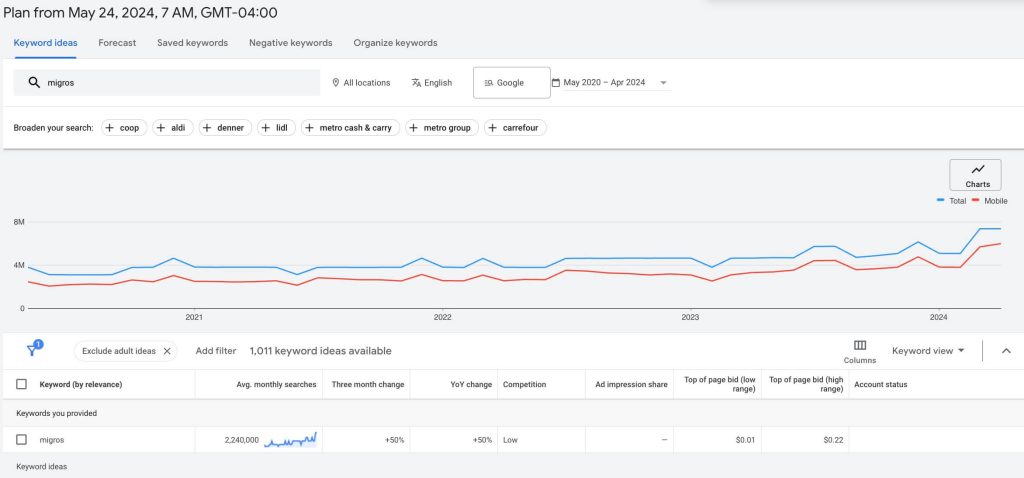
Branded Traffic
The second step is to go to your website’s Search Console and filter your click data by your brand Query. To do so, you will need to add a new query and provide your brand’s name as a keyword.
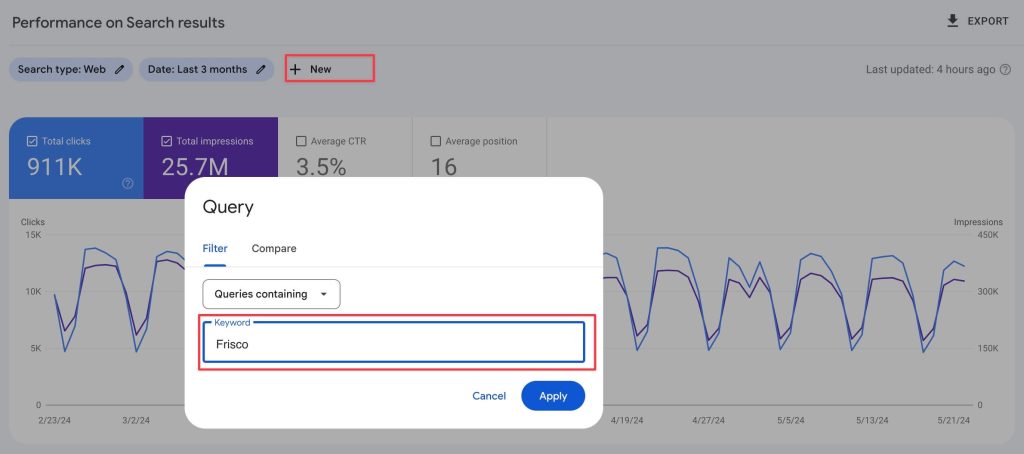
Once it’s applied, you can view the results for this query. This gives you numbers for the Total Clicks and Total Impressions you got from people searching for your brand online.
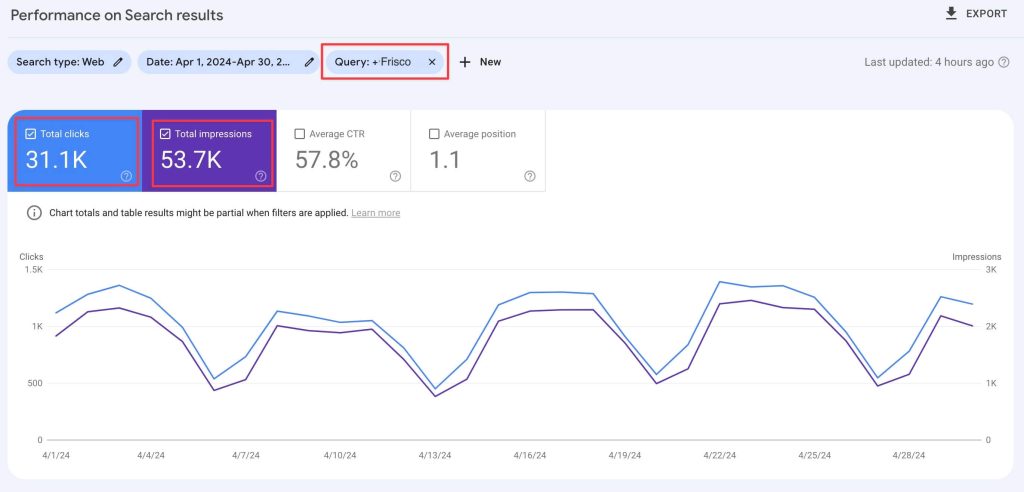
These are methods that I usually use to get a starting point for a brand awareness campaign.
2. Launch a new ad campaign and set its objective as awareness
Not surprisingly, to increase brand awareness on Facebook, you will need to run an awareness campaign. The important thing is to get it right and to make sure it’s optimized for your goals.
First, you need to log in to your account and create a new campaign. In the Objectives section, select Awareness. Facebook Ads will optimize your campaign to increase brand recognition. The success metric for such a campaign is the estimated ad recall lift.
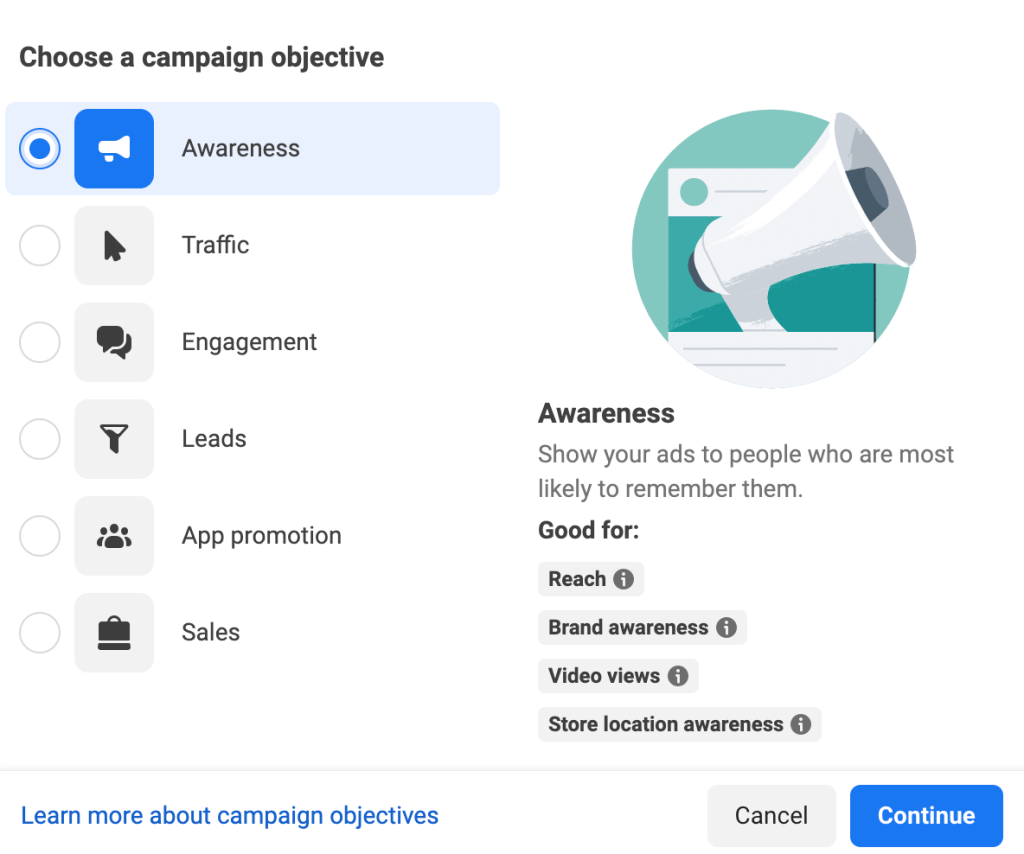
And, of course, to succeed, you need to craft effective creatives. Make sure your ads are vivid and memorable. They should have compelling designs, catchy messages, and a clear call to action. It’s better if you prepare separate ad sets for different audience segments. This will help you to better address their pain points and needs. A/B testing is also a valuable tool for getting the best results possible.
3. Decide on the campaign focus and choose a performance goal
The next step is to specify what you want to achieve. In the Performance goal section, select Maximize ad recall lift – this is the recommended option.
Alternatively, you can also consider Reach, if you want to focus on impressions. If you are planning to run video ads, ThruPlay can also be an option.
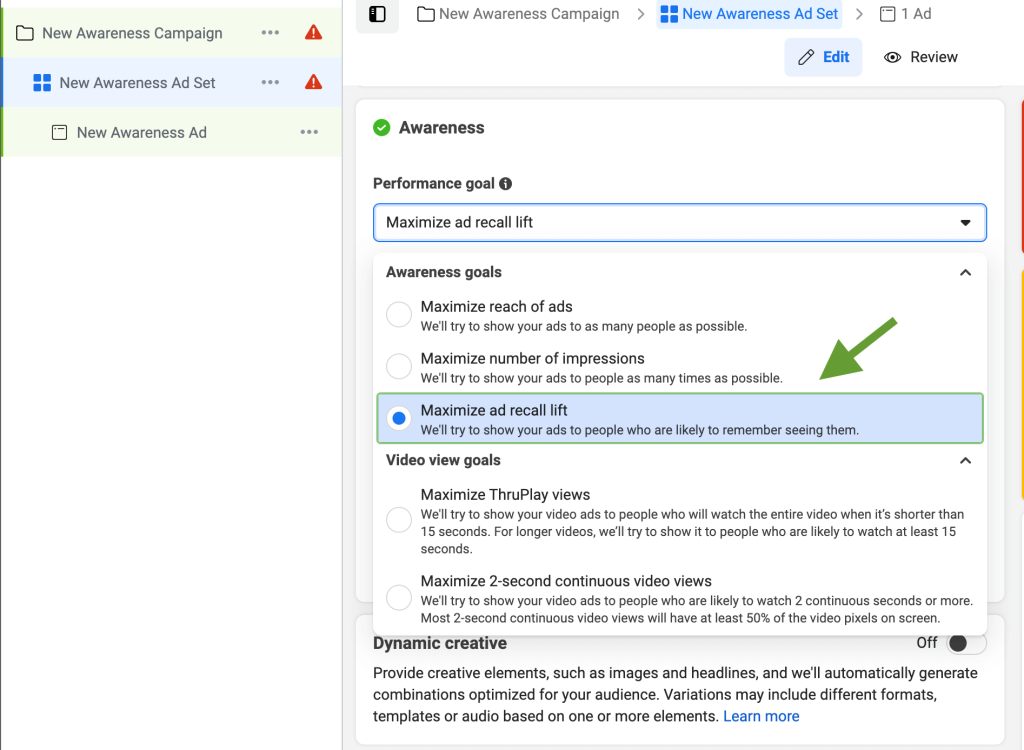
The default bidding strategy for this goal is “Lowest Cost”. In practice, this means your campaign will be optimized to show your ads to the maximum number of users for the lowest price possible.
4. Improve targeting for your Facebook brand awareness campaign
Now, it’s time to decide who to show your brand awareness ads. Facebook allows you to leverage detailed targeting. In addition to the basic characteristics (location, language, age), you can specify many other details. This includes your potential customers’ interests, behaviors, and preferences. You can select education level, marital status, industries where your potential customers work, and various life events.
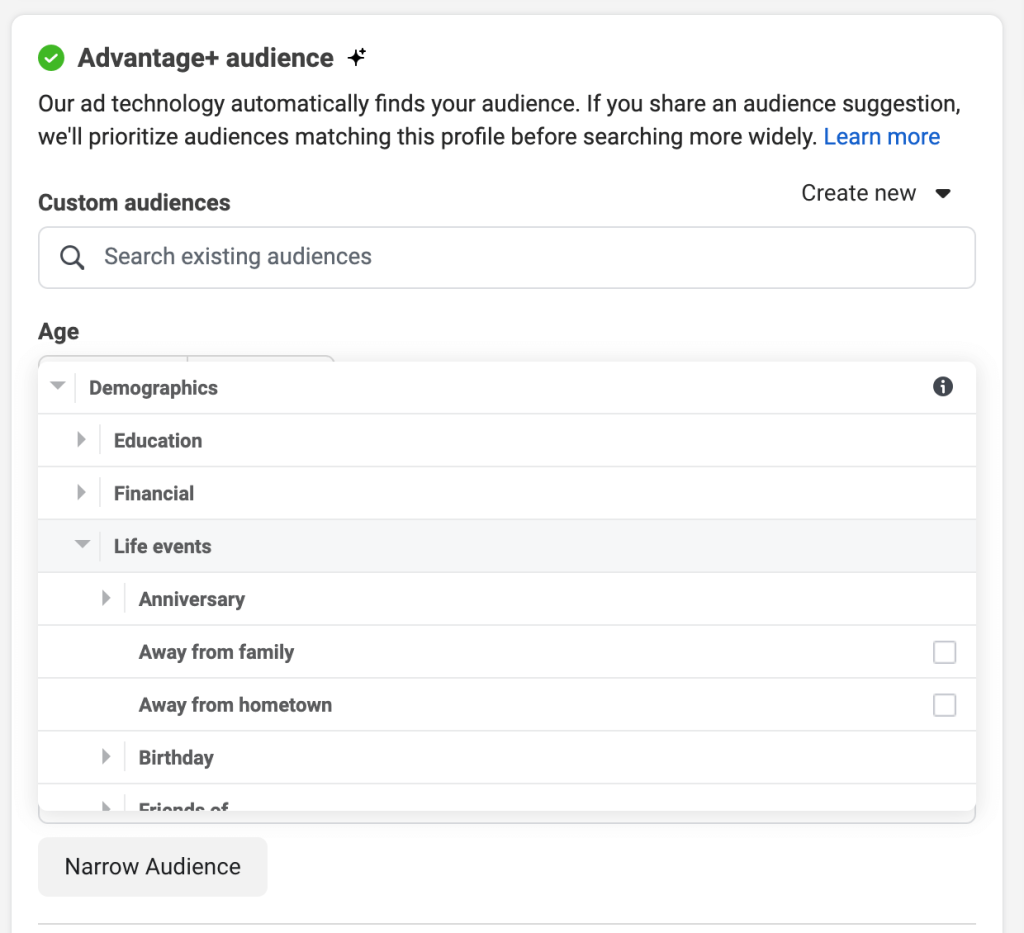
Finding the right audience is crucial for your campaign’s success. To achieve the best results, you may need to experiment with different approaches and conduct A/B testing.
Here are some of the options to consider:
- Add custom audiences. This option is useful when you want to retarget and increase awareness among the people who have already heard about your brand. Meta allows you to find such users across Facebook and Instagram.
- Create a lookalike audience. When you already have a refined target audience, Facebook can find people who share similar characteristics and are likely to be interested in your product.
- Use a B2B data platform. For narrow business niches, audiences can be created from a list of contacts provided by platforms like Cognism, ZoomInfo, etc.
- Try broad targeting. In addition to the previous approaches, you can also try another type of targeting that is based on generic demographics, such as gender, age, and location. In this case, Meta’s delivery system will show your ad to a broad circle of users. While this option lacks precision, it can build brand awareness among new audiences.
5. Experiment with different ad formats
Sometimes, even one ad type can be a strong basis for an impactful campaign. But more often, it’s helpful to try different Facebook advertising options.
In particular, you can use:
- Image / Photo ads – a classic combination of an image and text message.
- Video ads – various videos, often shot with a mobile phone. It’s a marketers’ top choice for Facebook ad campaigns.
- Carousels – you can add up to ten images or videos to show various products.
- Instant experiences – this is when, after tapping your ad on a smartphone, a user sees a fullscreen experience promoting your brand.
- Collections – ads where a user can select and explore a specific product in detail. A great option for marketing campaigns that promote multiple products, such as a new collection.
- Stories – another type of video ad that can get your audience’s attention.
- Messenger ads – ads inserted into a user’s messenger inbox, as well as sending personalized messages for retargeting.
- In-stream videos – ads played within popular video content from other creators. Although not very widespread, they are worth including in your marketing strategy.
- Playables – interactive ads in the format of mini-games. Most often, they are used for advertising mobile games, but can also be useful for other businesses.
Apart from using various ad types, it’s helpful to try out different ad placements – spaces for your ads on Facebook, Messenger, Instagram, and Meta Audience Network. They can range from newsfeeds on a user’s Facebook page and to showing your ads in the search results.
6. Run a brand lift campaign
In addition to a regular awareness campaign, consider running a brand lift campaign. This is a great option to increase awareness – however, it comes at a significant cost.
For most countries, this type of campaign is available with a monthly ad budget starting at around $20-30 K. Some other countries can run such ads having a budget as low as $5 K or as high as $70 K as a starting point. The associated costs make this option not very suitable for small businesses.
Check the budget criteria to learn what the requirements for your country are.
A brand lift campaign is, basically, a regular campaign that is followed by a poll. For example, you can ask your audience if they recall seeing your ad or if they would recommend your brand to a friend. The poll results are compared against the holdout group – people who didn’t see the ads from your brand lift campaign. The difference between the two groups shows the campaign’s impact.
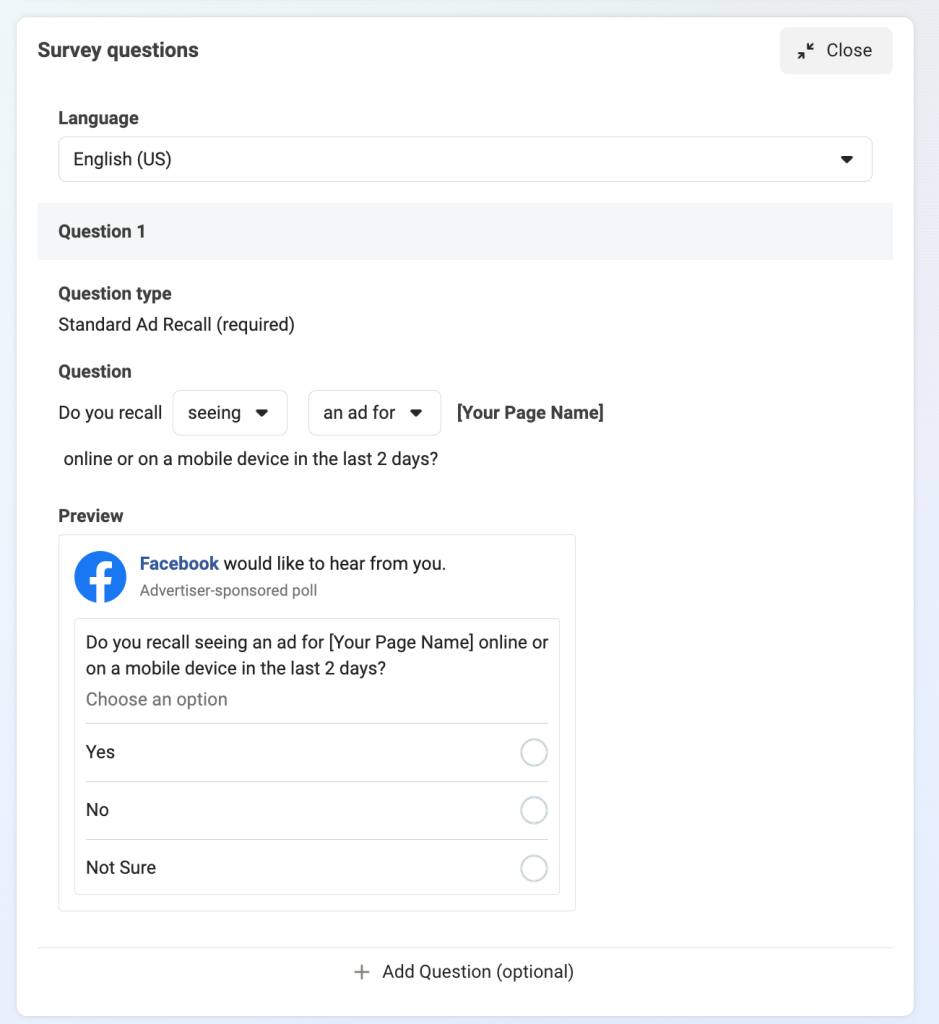
To create a brand lift campaign, go to Experiments and select Brand lift. Then, specify your region and industry and add the questions you want to include.
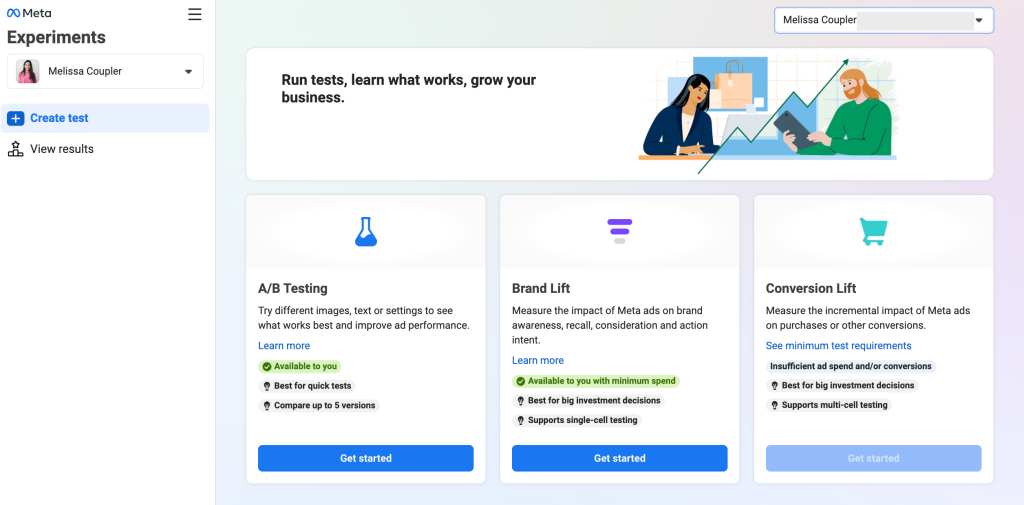
What Facebook brand awareness metrics to track?
Once your campaign is up and running, it’s important to collect performance data and analyze the results. If you monitor the KPIs closely, you can make adjustments to your Facebook marketing strategy on the go.
Here are the key metrics to pay attention to:
- Impressions – how many times your content was shown to a user. One person can have multiple impressions. The growth in impressions can be a sign of the Facebook brand awareness growth.
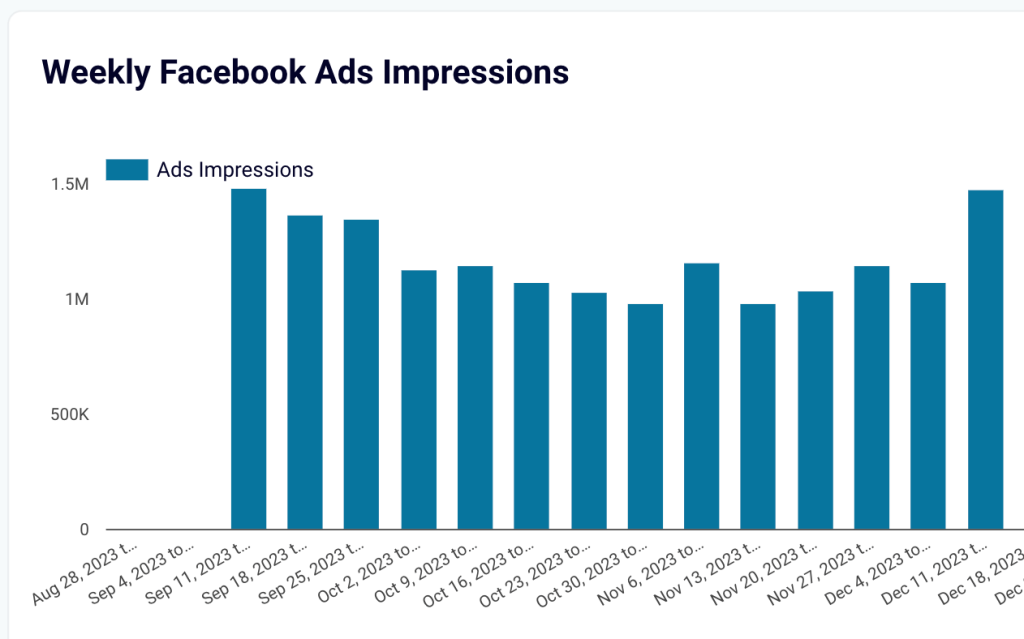
- Engagement – this is when a user engages with your content (for example, watches video for 10 seconds). Changes in engagement on your social media page, such as likes and comments, can also be taken into account as an indicator of brand awareness growth.
- Reach – how many people viewed your ads, i.e., were reached.
- Frequency – this is how many times a single person sees your ads. To maximize reach, you can use a frequency cap and limit it to 1-2 times.
- Estimated ad recall lift – shows how many people are estimated to remember your ad after two days. This metric is used for the brand lift campaigns.
- Cost per 1 K ppl reached – how much you paid to show your ads to 1 K users.
Also, you need to track metrics from other data sources (outside of Facebook):
- Branded impressions – how many times your website appeared in the search results for branded searches. Where to check: Google Search Console.
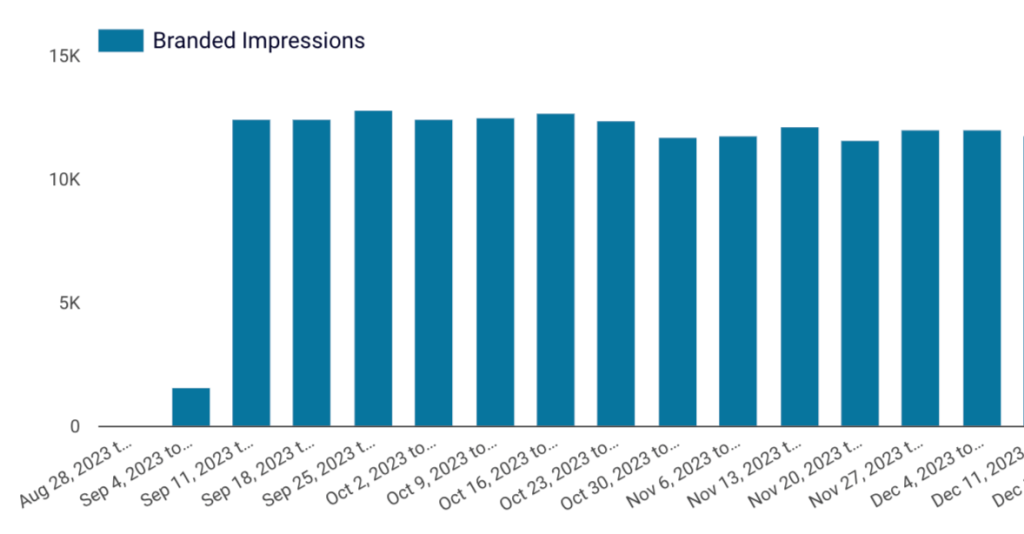
- Direct website traffic to the homepage – this is when someone lands on your website after directly typing your URL. An increase in direct traffic can be one of the indirect indicators of brand awareness growth. Where to check: GA4.
How to monitor the results of a brand awareness campaign on Facebook
Use a Facebook brand awareness dashboard
You can use this Brand Awareness Dashboard template to quickly visualize your data in a live dashboard like the one below. This template is offered for free. It uses data from Facebook Ads Manager and Google Search Console.
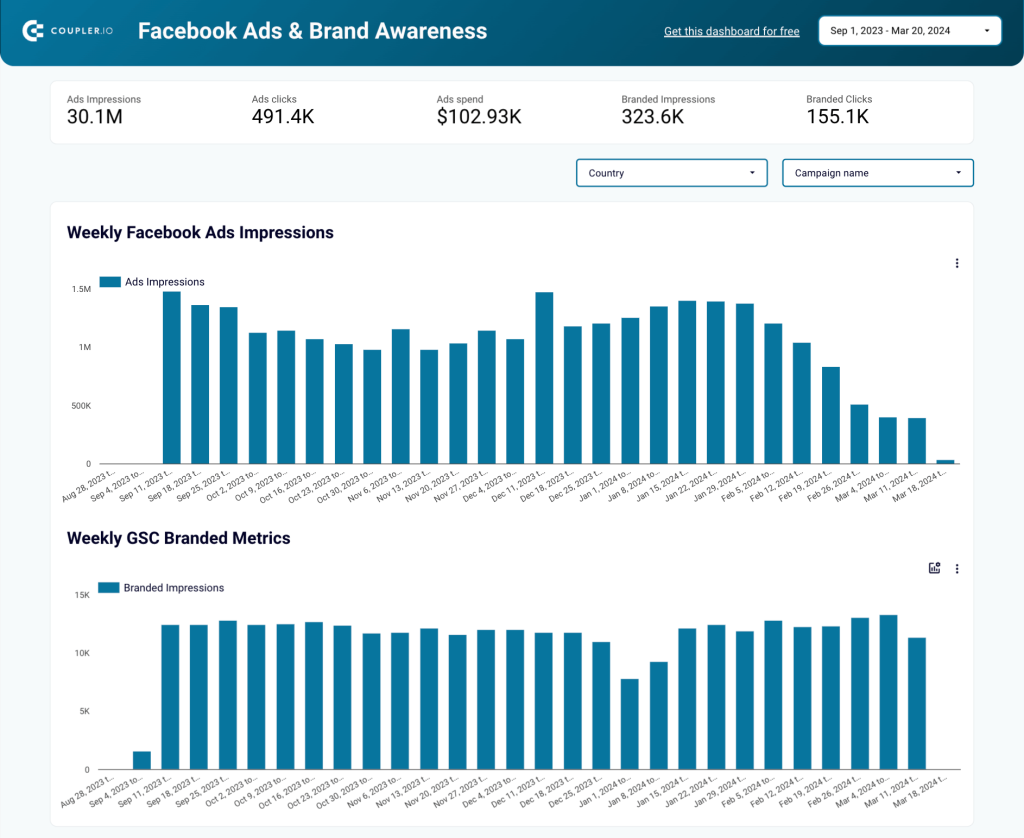
- How does this dashboard work?
It puts Ads Impressions from Facebook and branded impressions from Google Search Console on one chart. So, you can identify correlations – or absence of correlation when you expect them.
If you run ads for global brands (our congratulations!) like Nike or Samsung, you can see the impact on a global scale.
For smaller brands, to see the correlations, use filters to pick the countries where you run your biggest campaigns. In graphs for specific countries, you will be able to see how your Facebook Ads campaigns translate into Branded Impressions.
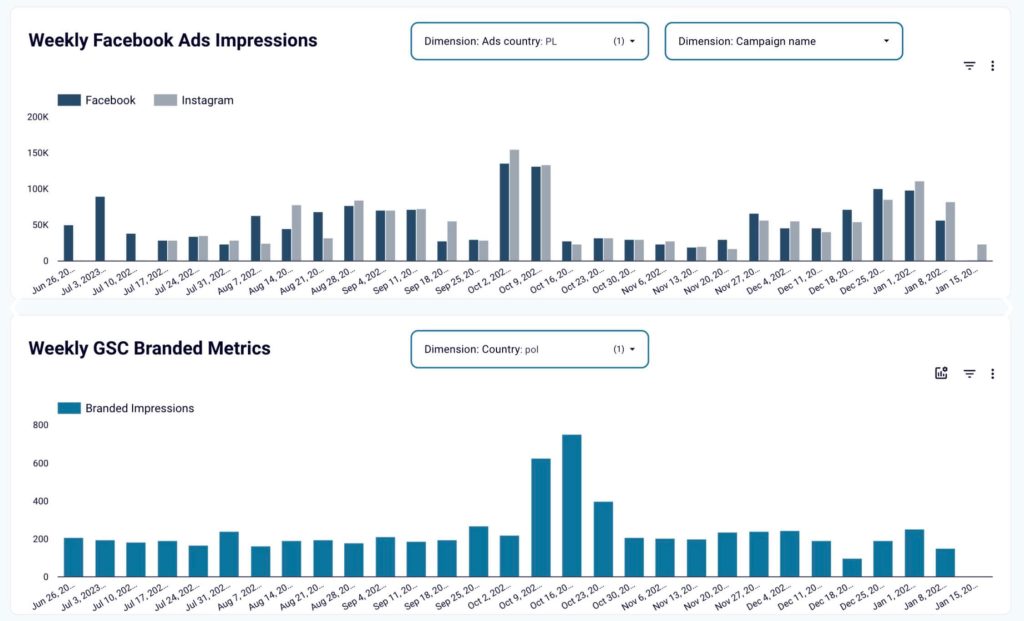
In the example above, you can see how activities on Facebook and Instagram in October correlate with the spike in Branded Impressions at about the same period.
One more tip: take into account that the increase in branded impressions and clicks often doesn’t occur from day one. It can take up to a couple of months from the start of your campaign for the search results to catch up.
Once you create your Coupler.io account (it’s free), the link will take you to settings. Following the onscreen instructions, you will get a copy of this dashboard with your data in less than 5 minutes. Just make sure to provide your brand name in the settings for the dashboard to work correctly (see the screenshot below).

If needed, you can later customize the dashboard by connecting more data sources, adding other graphs, and so on. This can be done directly in Looker Studio.
For more details on how to use this visualized report, see our article on building and using a Brand awareness dashboard.
Build a custom report in a spreadsheet or data viz app
Apart from using a template, you can create a dashboard from scratch or just create a report in spreadsheets. To make it auto-updating, you can use Coupler.io, a data analytics and automation tool.
To start transferring data for your evergreen report, select the app where you want to build it from the widget below. Then, click Proceed.
Once you create a Coupler.io account for free, follow the onscreen instructions to connect your data source and complete the data transfer. You can connect multiple data sources to your report. Coupler.io supports over 60 different sources, including GSC, GA4, LinkedIn Ads, Google Ads, and others.
Look at the internal stats for a basic understanding
Overall, measuring brand awareness can be tricky, and useful data can be collected from many different apps. To understand the impact of your campaign, you can start by looking at native reports in the app you use.
The first place to check is, obviously, your Facebook Ads report. You can select the campaign you are interested in and customize the report to show the columns you need: Reach, Impressions, Frequency, Clicks, CPM, and other metrics.

Apart from Facebook Ads, you can check the native reports in Google Analytics 4 and Google Search Console. This allows you to get valuable information about your funnel and branded impressions.
Cases when businesses increased brand awareness on Facebook Ads: examples
Example 1. Morellato Group
A jewelry brand conducted a digital marketing campaign to increase Facebook Ads brand awareness. They used a combination of image ads and video ads, and also leveraged the impact of influencers.
Their creative strategy was centered around high-quality eye-catching photos designed to stand out in the news feed. The video ads were equally high-quality and glamorous and matched the brand’s luxurious style.
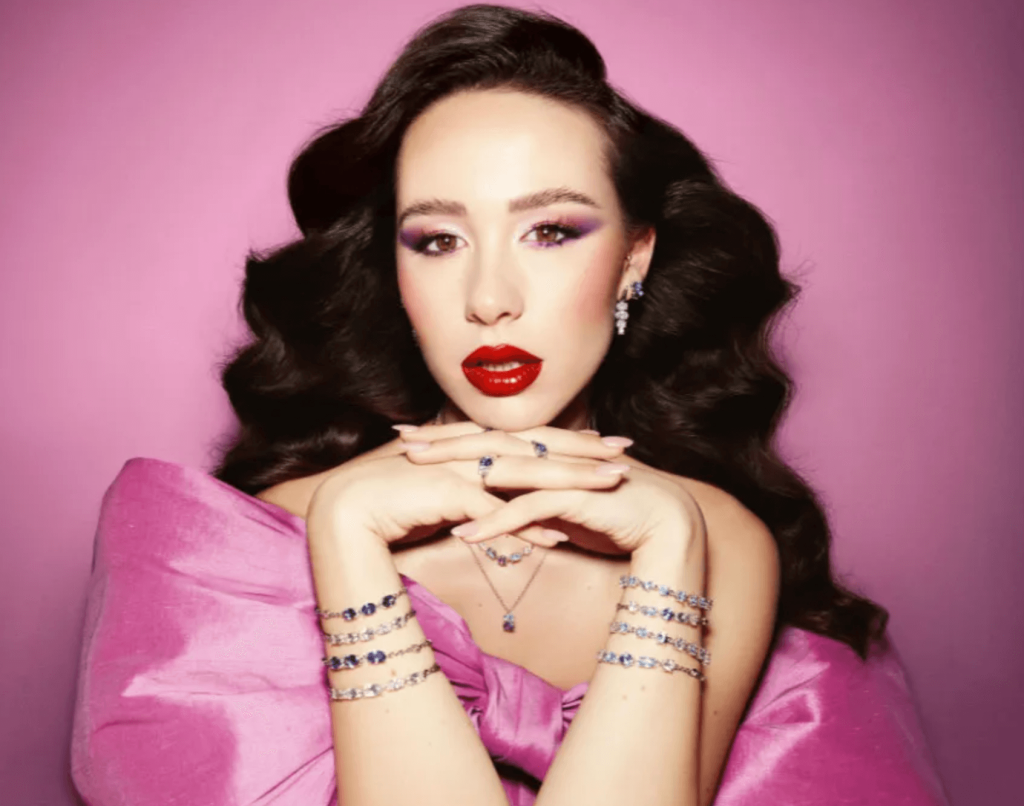
As a result, Morellato received a 15-point increase in ad recall and a 4.9-point increase in campaign awareness. The before-after difference was calculated using a brand lift study (results measurement stage after a brand lift campaign).
Ad formats used:
- Photo ads
- Video ads
- Collection
- Carousel
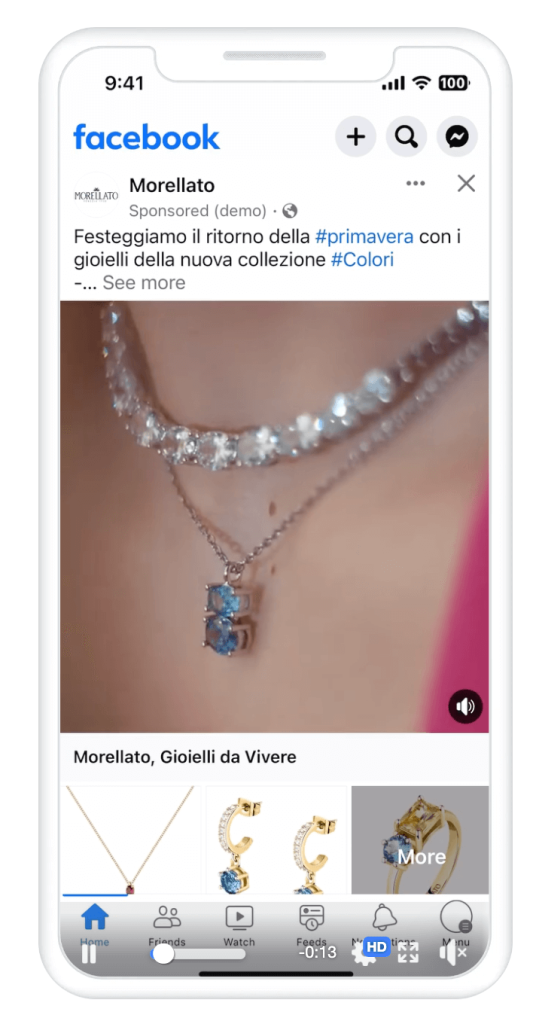
Example 2. Josh Cellars
A California winegrower company used Facebook for a brand awareness lift. Their ad objectives were to remind the customers about the brand around the holiday season and increase awareness about one of their products, prosecco. They successfully launched a mix of video ads and interactive poll ads.
As a result, the company saw an 11.5-point lift in ad recall and a 6.1-point lift in brand awareness.
Ad formats used:
- Full-screen stories
- Interactive poll ads
- Videos with 3D-like effects
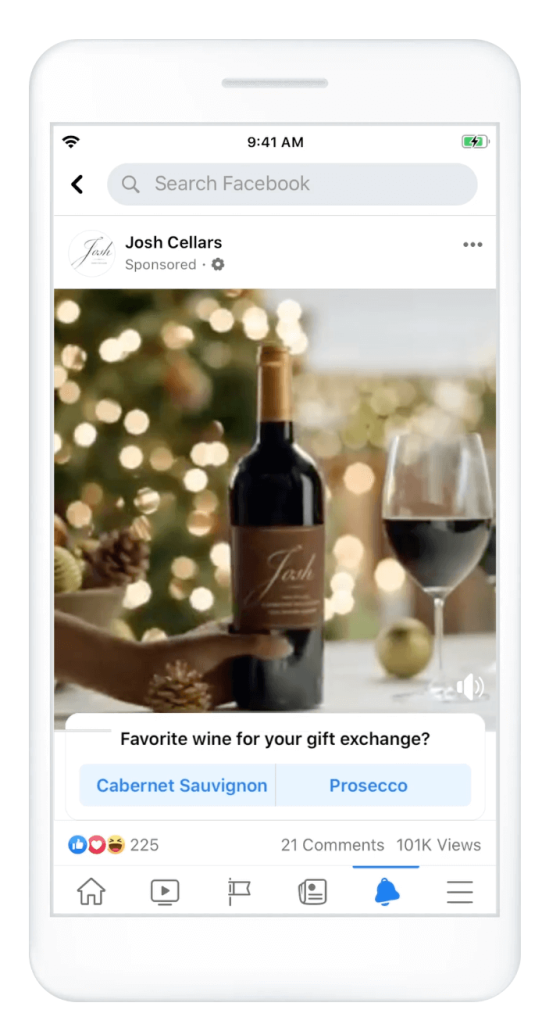
Example 3. Migros
A Swiss online supermarket ran a campaign to support the launch of their online shopping mobile app. Their to-go Facebook brand awareness ad was a mobile-optimized video. Its style mimicked TV news, with a man sharing his excitement about the app. The humorous content and mobile-first approach drove the number of video views up, increasing reach and engagement.
As an outcome, the retailer saw an 11.4-point increase in ad recall and 4.5-point increase in brand awareness.
Ad placements used:
- Stories on Facebook
- Reels on Instagram
- Feeds on both platforms
- Instagram Explore
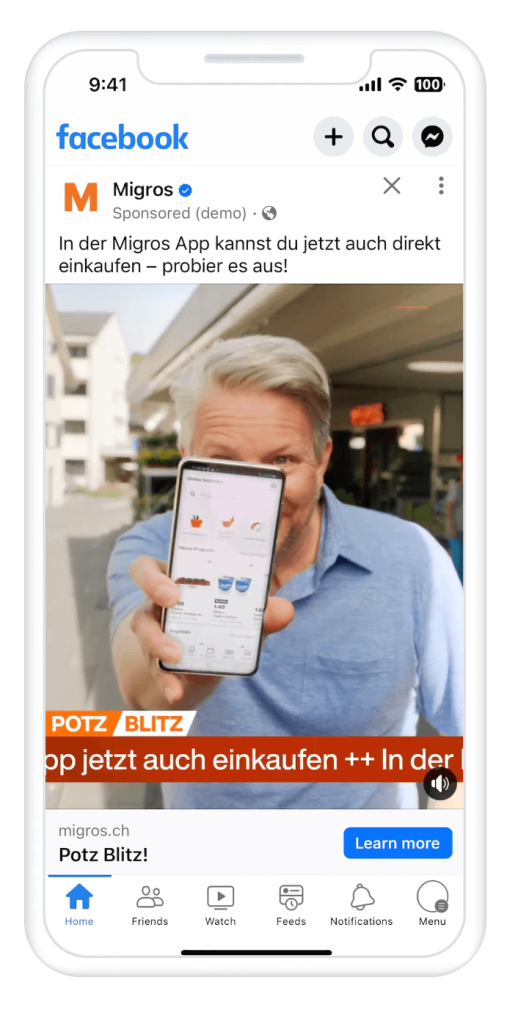
How good are Facebook Ads for a brand awareness boost?
As you can see from the examples we’ve discussed, Meta Suite can be a very effective channel for connecting with your audience. When using Facebook Ads for a brand awareness lift, you can pack your message in a variety of compelling formats, experiment with placements, and pinpoint your perfect audience.
However, it also makes sense to consider other social media marketing platforms, such as LinkedIn, X (Twitter), and YouTube. This will allow you to maximize reach and communicate with different audiences. Google Ads and Microsoft Ads will also be a valuable addition to your brand awareness strategy.



